#Traditional Folk Dances of India
Explore tagged Tumblr posts
Text
#Folk Dances of India: In Detail#Traditional Folk Dances of India#Traditional Indian Folk Dances#Folk Dance of India#Folk dances of India#Folk Dances of Different States in India#List of Indian folk dances#List of Important Folk dances of India#best platform for government exam prepration#class 24 bhunesh sir#best test series for ras#kvs librarian online coaching#best test series for ras pre#best online coaching for ras#best ras test series#india's best online learning platform#online government exams preparations
0 notes
Text
Happy Sharada Navaratri
Are you celebrating this Sharada Navaratri? This year the festival is held from Sunday, October 15th to Tuesday, October 24th, for the usual nine nights and ten days. The festival is celebrated in the Hindu month of Ashvin – the seventh month of the lunisolar Hindu calendar – and is considered as being an auspicious time of the year. On Navaratri, Hindus celebrate the goddess Durga‘s battles…

View On WordPress
#avatar#Brahmacharini#Chandraghanta#classical dance#Devi Maa Brahmacharini#Devi Maa Chandraghanta#Devi Maa Kalratri#Devi Maa Katyayani#Devi Maa Kushmanda#Devi Maa MahaGauri#Devi Maa ShailPutri#Devi Maa Siddhidatri#Devi Maa Skandamata#Durga#folk dance#Goddess Durga#Hindu#India#Indian Culture#Indian Tradition#Kalratri#Katyayani#Kushmanda#Mahagauri#Navaratri#Navdurga#pandal#Raffaello Palandri#Shailputri#Siddhidatri
35 notes
·
View notes
Text
youtube
#youtube#social media#travel#vacation#cultural#culture#outdoor entertaining#entertainment#traditionalism#traditional#traditional art#tradition#traditional media#indian#india#indianfolkart#folk dance#folk music#indie folk#folk#viralshorts#viralvideos#viralreels#viralpost#viral on social media#video viral#cute videos#live music#musica#music video
2 notes
·
View notes
Text
Padma Shri 2022 Honorees: Lalita Vakil and Vidyanand Sarek from Himachal Pradesh
#1941#Chamba Rumal#chmaba#dances#decorative handkerchief#Himachal Pradesh#India’s highest civilian awards#iterature and folk traditions#June 26#Lalita Vakil#padam shree from himachal#Padma Shri 2022 Honorees#Pahari folk songs#Pahari literature and folk art#Rajgarh#sirmour#Vidyanand Sarek
0 notes
Text
Dances of India

Dance is an ancient and celebrated cultural tradition in India. Folk dances abound all across the country, and huge crowds of people can be found dancing at festivals and weddings. Dance and song features heavily in Indian cinema (so-called “Bollywood” films), too. But where does Indian dance draw its roots from? Here are six of the most important classical dance forms of India.
Classical Dances of India
Odissi
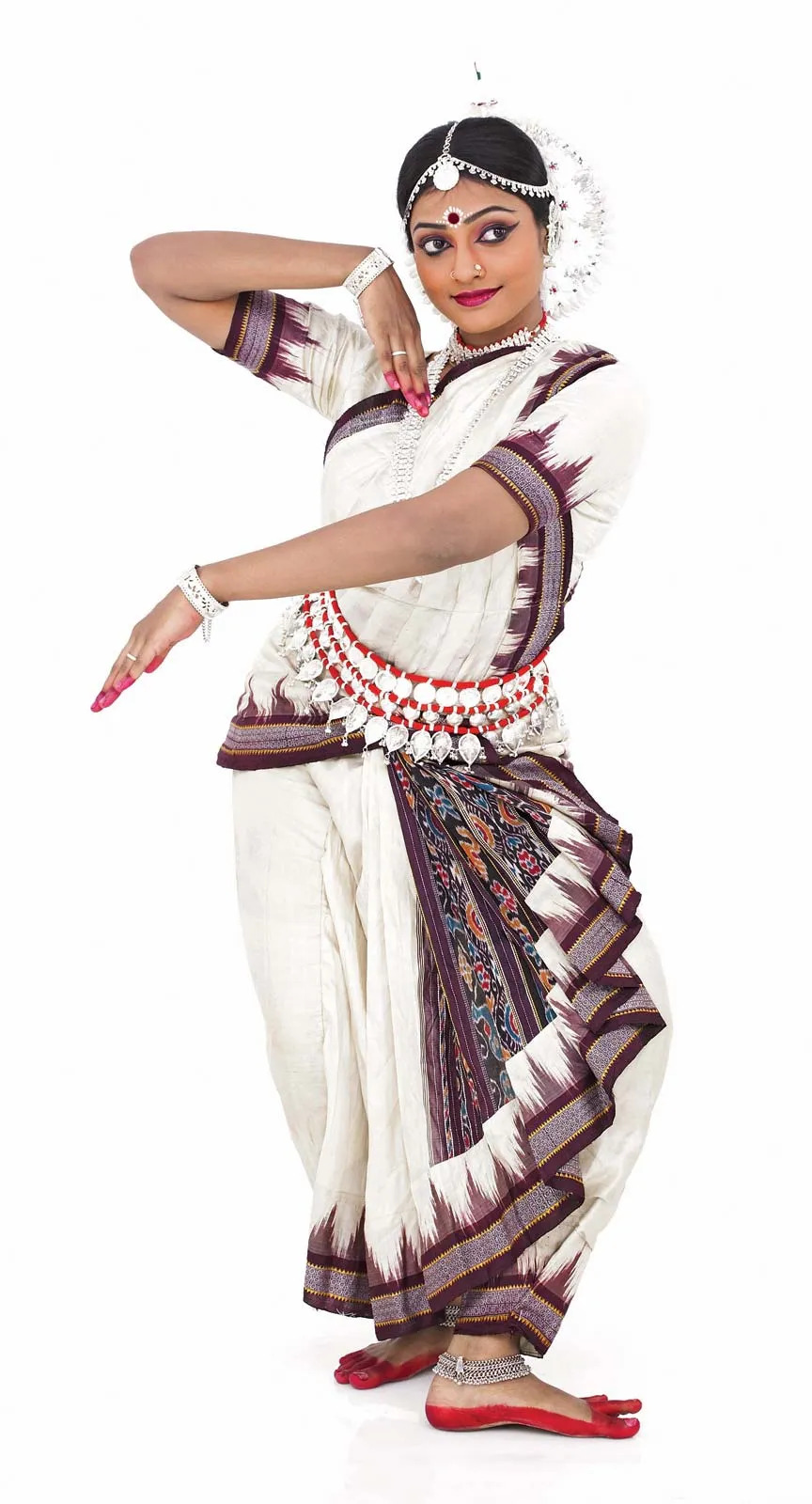
Dancer performing Indian classical odissi dance.
Odissi is indigenous to Orissa in eastern India. It is predominantly a dance for women, with postures that replicate those found in temple sculptures. Based on archaeological findings, odissi is belived to be the oldest of the surviving Indian classical dances. Odissi is a very complex and expressive dance, with over fifty mudras (symbolic hand gestures) commonly used.
Kuchipudi
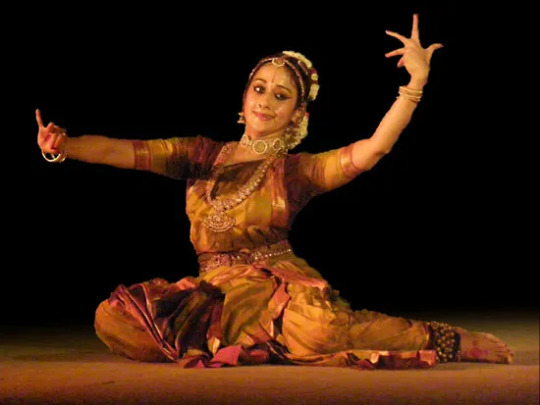
Kuchipudi performance.
Unlike the other styles mentioned, kuchipudi requires talent in both dancing and singing. This dance, from the state of Andhra Pradesh in southeastern India, is highly ritualized, with a formalized song-and-dance introduction, sprinkling of holy water, and burning of incense, along with invocations of goddesses. Traditionally the dance was performed by men, even the female roles, although now it is predominantly performed by women.
Manipuri

Manipuri-style performance of Indian classical dance.
Manipuri comes from Manipur in northeastern India. It has its roots in that state’s folk traditions and rituals, and often depicts scenes from the life of the god Krishna. Unlike some of the other, more rhythmic dances, Manipuri is characterized by smooth and graceful movements. Female roles are especially fluid in the arms and hands, while male roles tend to have more forceful movements. The dance may be accompanied by narrative chanting and choral singing.
Kathak

Kathak school dancer, in Mughal costume, performing Indian classical dance.
A dance of northern India, Kathak is often a dance of love. It is performed by both men and women. The movements include intricate footwork accented by bells worn around the ankles and stylized gestures adapted from normal body language. It was originated by Kathakas, professional storytellers who used a mixture of dance, song, and drama. Like other Indian dances it began as a temple dance, but soon moved into the courts of ruling houses.
Kathakali

Kathakali dance
Kathakali comes from southwestern India, around the state of Kerala. Like bharatanatyam, kathakali is a religious dance. It draws inspiration from the Ramayana and stories from Shaiva traditions. Kathakali is traditionally performed by boys and men, even for female roles. The costumes and makeup are especially elaborate, with faces made to look like painted masks and enormous headdresses.
Bharatanatyam

Bharatanatyam performance
Bharatanatyam is a dance of Tamil Nadu in southern India. It traces its origins back to the Natyashastra, an ancient treatise on theatre written by the mythic priest Bharata. Originally a temple dance for women, bharatanatyam often is used to express Hindu religious stories and devotions. It was not commonly seen on the public stage until the 20th century. The dance movements are characterized by bent legs, while feet keep rhythm. Hands may be used in a series of mudras, or symbolic hand gestures, to tell a story.
6 Classical Dances of India | Britannica
38 notes
·
View notes
Text
The Endangered Dance Form Of West Bengal
Dance, art, and culture and an adda at the local chai shop make a bangali, a pure bangali. Let's have an adda over tea about the endangered dance form, Chhau dance, also spelled Chhou dance. It is found in other regions of India like Jharkhand, and Odisha with different forms and names- Purulia Chhau of West Bengal, the Seraikella Chhau of Jharkhand, and the Mayurbhanj Chhau of Odisha. The dance includes everything from a structured dance with Shaivist, Shakti, and Vaishnavist religious themes to a celebration of martial arts, acrobatics, and athletics done in the festive themes of a folk dance.

It is customarily performed by an all-male group, and the dance may be a syncretic dance form that evolved from the blending of classical Hindu dances and the customs of long-extinct local tribes. The dance is remarkable and unites individuals from various socioeconomic levels in a joyful and religious atmosphere. Performed by male dancers who trained under Gurus or Ustads (masters), or who come from families of traditional artists. Its roots can be found in indigenous dance and combat styles. The basic language of Chhau dance consists of khel (fake combat moves), chalis and topkas (stylized animal and bird gaits), and uflis (movements based on a country housewife's everyday tasks). Oral transmission is used to pass on the knowledge of dance, music, and mask-making. It lasts all night long and is performed in an area known as an akhada or asar.
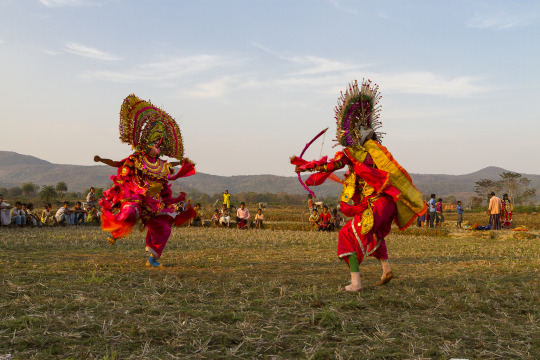
Local mythology, folklore, scenes from the Ramayana and Mahabharata, as well as abstract concepts, are some of the topics covered by the dancers' repertory. The vibrant music is characterized by the rhythm of indigenous drums like the dhol, dhumsa and kharka and the melody of the mohuri and shehnai. The majority of the dancers are from the Munda, Mahato, Kalindi, Pattnaik, Samals, Daroga, Mohanty, Acharya, Bhol, Kar, Dubey, and Sahoo communities. Musicians come from the Mukhi, Kalindi, Ghadhei, and Dhada groups. They take part in the instrument production as well. Communities of traditional painters known as Maharanas, Mohapatras, Sutradhars are involved in the making of these masks.

Not only were Paika and Natua the forerunners of Chhau dance (particularly Purulia style), but Nachni dance also had a significant influence on the way Chhau is known today. The female moves and gaits used in Chhau dance are virtually solely taken from Nachni dance. The Chhau dance was added to the Representative List of the Intangible Cultural Heritage of Humanity by UNESCO in 2010. The Government Chhau Dance Centre and the Mayurbhanj Chhau Nritya Pratisthan were created by the Government of Odisha in 1960 and 1962, respectively, in Seraikella and Baripada.
51 notes
·
View notes
Text

Explore the rich history of Kumbh Mela, why it is famous, how to go, timings, location, must know things before visit, precautions, everything you need to know.
The Kumbh Mela is not just a festival; it is a global phenomenon that attracts millions of devotees, seekers, and travelers. Steeped in history and spirituality, this grand event is recognized as the world’s largest human gathering. Let us explore the rich heritage, activities, and travel tips for attending the Kumbh Mela, especially if you’re planning to travel from Udaipur.
The History of Kumbh Mela: A Journey Through Time
The origins of Kumbh Mela are rooted in ancient Indian mythology. According to legend, the devas (gods) and asuras (demons) churned the ocean (Samudra Manthan) to extract the nectar of immortality (Amrit). As they fought over the nectar, drops of it fell at four places: Prayagraj, Haridwar, Nashik, and Ujjain. These places became sacred, and the Kumbh Mela is held there in rotation.
The first documented Kumbh Mela was recorded during the reign of King Harshavardhana in the 7th century CE. Today, it is recognized by UNESCO as an “Intangible Cultural Heritage of Humanity.”
Why is Kumbh Mela Famous?
Kumbh Mela is renowned for its spiritual significance and unparalleled scale. Here’s why it stands out:
Sacred Rituals:
Devotees take a holy dip in the river to cleanse their sins and attain moksha (liberation).
Spiritual Discourses:
Saints, yogis, and spiritual leaders gather to share wisdom.
Cultural Exchange:
A melting pot of diverse cultures and traditions from across India and the world.
Massive Gatherings:
Millions come together, making it a unique spectacle of faith and humanity.
What to Do at Kumbh Mela
Take a Holy Dip:
Begin your spiritual journey by bathing at the Sangam, the confluence of the Ganga, Yamuna, and Saraswati rivers.
Attend Spiritual Gatherings:
Join satsangs, kirtans, and discourses by revered saints.
Explore Akharas:
Visit camps of different Hindu sects to learn about their traditions.
Witness Cultural Events:
Enjoy folk music, dance, and art exhibitions.
Indulge in Local Cuisine:
Relish delicious prasad and regional delicacies.
FAQs About Kumbh Mela
What is the significance of Kumbh Mela?
It symbolizes spiritual awakening and purification of the soul.
When is the next Kumbh Mela?
The next Kumbh Mela will begin on 14th January 2025 in Prayagraj.
What are the key bathing dates?
Key dates include Makar Sankranti, Mauni Amavasya, and Basant Panchami.
Is there an entry fee for Kumbh Mela?
No, entry is free for all.
Can foreigners visit Kumbh Mela?
Yes, it welcomes visitors from across the globe.
Summary:
The Kumbh Mela is more than just a religious gathering; it’s a profound tapestry of faith, culture, and human connection. Every step along the ghats, every dip in the sacred rivers, and every interaction with a fellow pilgrim is a reminder of the shared quest for spiritual enlightenment.
Witnessing the Kumbh is a humbling experience — it brings people from diverse walks of life together, united by devotion and hope. The grandeur of the rituals, the wisdom shared by sages, and the vibrant cultural expressions serve as a testament to the richness of India’s heritage.
In a world often defined by differences, the Kumbh Mela stands as a beacon of unity, offering moments of introspection, celebration, and collective purpose. Whether you’re a seeker, an observer, or simply curious, the Kumbh promises an unforgettable journey — a reminder that faith and community transcend boundaries.
To get complete information with live video coverage, dates, timings, location and precaution to take care click on the below link:
#KumbhMela2025, #KumbhMela, #KumbhMelaVibes, #DivineKumbhMela, #KumbhMelaPilgrimage, #KumbhMelaJourney, #SacredKumbhMela, #KumbhMelaBlessings, #KumbhMelaFaith, #KumbhMela2025India
#KumbhMela2025#KumbhMela#KumbhMelaVibes#DivineKumbhMela#KumbhMelaPilgrimage#KumbhMelaJourney#SacredKumbhMela#KumbhMelaBlessings#KumbhMelaFaith#KumbhMela2025India
2 notes
·
View notes
Text
Navaratri 2024: Embracing Divine Energies in April's Splendor.

For the last Navaratri celebration, the focus was on honoring tradition while adding a modern twist to the culinary delights. Here's a glimpse of the delicious fare that graced the tables during Navaratri 2024 in April:
Sundal Varieties: Sundal, a South Indian snack made from legumes like chickpeas, black-eyed peas, or lentils, was prepared in a myriad of flavors. From traditional coconut and mustard tempering to innovative twists like tangy mango or spicy tamarind, each sundal offered a burst of flavor.
Navaratri Special Thali: A vibrant array of dishes adorned the Navaratri special thali. It featured delicacies like crispy Sabu dana vadas, creamy pumpkin kheer, and spicy potato curry. The thali was a celebration of diverse flavors and textures, symbolizing the richness of the Navaratri festival.
Fruit Chat with a Twist: A refreshing fruit chat received a makeover with a drizzle of honey infused with cardamom and saffron. This sweet and tangy treat was a delightful addition to the Navaratri menu, offering a burst of freshness amidst the rich festive fare.
Navaratri-inspired Mocktails: Cool and refreshing mocktails were served to complement the spicy and savory dishes. Mocktails infused with flavors like rose, mint, and citrus provided a welcome respite from the heat and added a touch of sophistication to the celebrations.
Innovative Desserts: Traditional sweets like coconut ladu and jaggery-based delicacies shared the spotlight with innovative desserts. Guests indulged in decadent offerings like chocolate-dipped bananas adorned with edible gold leaf and saffron-infused rashgullas, elevating the dessert experience to new heights.
Garba: Garba is a traditional dance form originating from the state of Gujarat in India. During Navaratri, people gather in large groups to perform this joyful and energetic dance. Dancers form concentric circles or intricate patterns, clapping their hands and moving gracefully to the rhythm of traditional folk songs. The vibrant costumes and rhythmic beats create an electrifying atmosphere, where participants immerse themselves in the joyous spirit of the festival.
Dandiya Raas: Dandiya Raas is another popular dance form performed during Navaratri, especially in Gujarat and other parts of India. In this dance, participants wield colorful sticks called dandiyas while moving in pairs or groups. The dancers strike their dandiyas in sync with the music, creating a rhythmic pattern of beats. Dandiya Raas is not only a dance but also a social activity that fosters camaraderie and community spirit.
Folk Dances: Apart from Garba and Dandiya Raas, various folk dances from different regions of India are also performed during Navaratri. These dances showcase the cultural diversity of the country, with each region contributing its unique style and repertoire. From the graceful movements of Odissi to the energetic steps of Bhangra, folk dances add a colorful dimension to Navaratri celebrations, reflecting the rich heritage and traditions of India.
#hindu festival#hindu gods#hinduism#hindu mythology#hindu sahiban nahi samjhe gita ved puran#hindusim#mahadev#india#hindublr#goddess#hindugods#festival navratri#festival#navaratri#Hindu God's
10 notes
·
View notes
Text
Jaipur more than just a destination

A Journey to the Pink City Jaipur, the capital of Rajasthan, is known as the "Pink City" for its stunning pink-colored buildings. This city is a vibrant blend of tradition, art, and modernity. From its grand palaces to colorful bazaars, Jaipur offers a glimpse into India's rich cultural heritage. Let’s explore what makes Jaipur’s culture so unique.
A City Painted in Pink Jaipur earned its nickname in 1876 when Maharaja Ram Singh painted the entire city pink to welcome the Prince of Wales. Pink symbolizes hospitality, and this tradition continues, as many buildings in the old city remain painted in this hue. Walking through Jaipur's streets feels like stepping into a fairytale.
Majestic Palaces and Forts The architecture of Jaipur is a significant part of its culture.
Hawa Mahal (Palace of Winds): This iconic structure has 953 small windows, allowing royal ladies to watch street festivities without being seen. Amber Fort: Known for its intricate designs and elephant rides, this fort is a marvel of Rajasthani architecture. City Palace: A blend of Mughal and Rajput styles, this palace showcases Jaipur’s royal heritage. These palaces tell stories of kings, queens, and battles, offering a peek into the city’s glorious past.
3.Traditional Rajasthani Cuisine Food is an essential part of Jaipur’s culture. The city offers a variety of mouthwatering dishes:
Dal Baati Churma: A traditional Rajasthani meal consisting of lentils, baked wheat balls, and sweet crushed wheat. Ghevar: A sweet dish popular during festivals like Teej. Pyaaz Kachori: A spicy onion-filled snack best enjoyed with tamarind chutney. Don’t forget to visit local eateries to enjoy authentic flavors served with love.
Festivals: A Riot of Colors Jaipur celebrates festivals with great enthusiasm.
Teej Festival: Women dress in green sarees and sing traditional songs to celebrate the monsoon. Jaipur Literature Festival: Known as the "greatest literary show on Earth," it attracts writers and thinkers from around the world. Elephant Festival: Held during Holi, this unique festival showcases beautifully decorated elephants, traditional dances, and games. Each festival highlights Jaipur's joyous and inclusive spirit.
Vibrant Handicrafts and Shopping Jaipur is a shopper’s paradise, offering beautiful handicrafts and textiles.
Jewelry: Jaipur is famous for its Kundan and Meenakari jewelry. Block-Printed Fabrics: You can find colorful saris and bedsheets made using traditional techniques. Blue Pottery: This unique craft is a Jaipur specialty, featuring beautiful designs on ceramics. Bazaars to Visit: Johari Bazaar, Bapu Bazaar, and Tripolia Bazaar are must-visits for a truly local shopping experience.
Dance, Music, and Folklore Rajasthani folk music and dance are integral to Jaipur's culture.
Ghoomar Dance: Performed by women in swirling skirts, this dance is a celebration of grace. Kalbeliya Dance: Known as the "snake charmer dance," it reflects the lifestyle of the Kalbeliya community. Folk Music: Instruments like the dholak, sarangi, and ektara create melodies that tell tales of love, war, and devotion. These performances are often seen during festivals and cultural evenings in Jaipur.
Warm Hospitality and Traditions The people of Jaipur are known for their warm and welcoming nature. Hospitality is deeply rooted in their culture, and visitors often feel like part of a big family. Respect for elders, vibrant attire, and traditional customs make Jaipur’s culture even more endearing.
8.Preservation of Heritage in Modern Times While Jaipur embraces modernity with luxury hotels and malls, it remains deeply connected to its roots. The city has been recognized as a UNESCO World Heritage Site, highlighting its efforts to preserve its historical and cultural legacy.
9.Plan Your Visit If you’re planning a trip to Jaipur, take time to explore its palaces, taste its food, shop in its markets, and join in its festivals. Every corner of the city tells a story, waiting to be discovered.
Jaipur’s culture is a beautiful tapestry of history, art, and tradition. Whether you’re a history buff, a foodie, or an art lover, the Pink City promises to leave you enchanted.
Are you ready to experience the magic of Jaipur?
#festivals and traditions#art and craft of jaipur#the pink city#a royal story#jaipur culture#a walk through the jaipur#Jaipur's history and culture
2 notes
·
View notes
Text
Celebrating the Spirit of Nagaland: Runway India at the Heart of the Hornbill Festival

Nagaland, a land of vibrant traditions, exquisite handicrafts, and rich cultural heritage, stands out as one of India’s most unique and diverse regions. At the heart of this cultural treasure lies the Hornbill Festival, a grand celebration that showcases the tribal art, crafts, music, and traditions of the state. For Runway India, a platform dedicated to empowering artisans and promoting tribal art, collaborating with the Hornbill Festival represents a powerful opportunity to preserve and celebrate Nagaland’s rich legacy.
This partnership not only highlights the beauty of Nagaland’s craftsmanship but also opens doors for people across India to buy unique Nagaland products online, connecting artisans to wider audiences and fostering appreciation for their work.
Runway India and the Hornbill Festival: A Cultural Bridge
The Hornbill Festival, known as the "Festival of Festivals," is a week-long event that takes place every December in Nagaland. The festival is a celebration of the state’s 16 major tribes, bringing together traditional dances, folk music, indigenous games, and, most importantly, the stunning artistry of local craftsmen. Each handcrafted item, whether it’s a vibrant handwoven shawl or intricately designed jewelry, tells a story of heritage and cultural pride.
For Runway India, participating in the Hornbill Festival aligns with its mission to create opportunities for indigenous artisans. By showcasing their products and skills, Runway India ensures that these talented creators gain the recognition they deserve, both locally and globally. This collaboration also emphasizes the importance of buying authentic handicrafts online, bridging the gap between artisans and consumers across India.
Promoting Nagaland’s Unique Handicrafts
Nagaland’s handicrafts are celebrated for their creativity and sustainability. Products made from banana fibre have gained popularity for their eco-friendly appeal. Banana fibre is not only durable but also reflects the resourcefulness of Nagaland’s artisans, who transform this natural material into stunning textiles, bags, and home décor items.
To ensure these crafts reach a wider audience, Runway India actively supports online marketplaces where people can find and buy Nagaland handicrafts online in India. From intricate bamboo products and hand-carved wooden artifacts to vibrant Naga jewelry, these items showcase the talent and ingenuity of the region’s artisans.
Supporting Handicraft Training and Empowerment
Preserving traditional crafts requires consistent effort and skill development. Runway India collaborates with artisans and training centers to promote the growth of sustainable handicraft practices. Some of the best banana fibre training centers in India are located in Nagaland, where artisans are trained to refine their skills, innovate designs, and meet market demands.
By supporting these centers, Runway India not only empowers artisans but also ensures the sustainability of indigenous crafts. Training programs help artisans modernize their techniques while staying rooted in tradition, enabling them to compete in national and international markets.
Nagaland’s Handicraft Industry: A Legacy of Excellence
The handicraft manufacturers in Nagaland play a vital role in preserving the cultural identity of the region. Their work extends beyond creating beautiful items; it is about sustaining livelihoods and passing down traditions to the next generation. Bamboo, cane, and wood are commonly used materials, with artisans crafting everything from furniture and baskets to decorative pieces.
Runway India works closely with these manufacturers, helping them adapt to changing market trends while maintaining the authenticity of their craft. This collaboration ensures that the artisans' stories and traditions continue to reach a global audience, providing consumers with the opportunity to connect with the culture of Nagaland through their products.
Why Support Nagaland Handicrafts?
When you buy Nagaland handicrafts online, you’re not just purchasing a product; you’re supporting a community, preserving a heritage, and promoting sustainability. Each piece of art carries the essence of Nagaland’s culture, allowing you to bring a part of this beautiful state into your home.
Runway India’s mission is to make these products more accessible, creating an online platform where people can explore and purchase authentic handicrafts. Whether it’s a handwoven shawl, a banana fibre bag, or a bamboo basket, every purchase contributes to the empowerment of artisans and the preservation of their craft.
Conclusion
The collaboration between Runway India and the Hornbill Festival is a celebration of Nagaland’s spirit, artistry, and cultural heritage. By showcasing the state’s unique crafts and empowering its artisans, Runway India is playing a crucial role in preserving these traditions for future generations.
For those looking to support this movement and explore the rich artistry of Nagaland, platforms like Runway India offer the perfect opportunity to buy unique Nagaland products online and connect with the stories behind each creation. With a commitment to sustainability and innovation, Runway India is ensuring that Nagaland’s handicrafts continue to shine brightly on the global stage, offering a meaningful way to celebrate and cherish India’s diverse cultural heritage.
FAQs
1. What is the Hornbill Festival, and why is it important? The Hornbill Festival is an annual cultural event held in Nagaland to celebrate the rich traditions, art, and heritage of the state's 16 tribes. It promotes cultural preservation and provides a platform for artisans to showcase their crafts.
2. How can I buy unique Nagaland products online? You can purchase authentic Nagaland handicrafts through platforms like Runway India, which connect artisans to buyers across India and beyond. These include items like handwoven textiles, banana fibre products, and bamboo crafts.
3. What are banana fibre products, and why are they popular? Banana fibre products are eco-friendly items made from the natural fibres of banana plants. They are durable, sustainable, and crafted into beautiful bags, mats, and textiles by skilled artisans in Nagaland.
4. Are there training centers in Nagaland for handicrafts? Yes, some of the best banana fibre training centers in India are in Nagaland, providing artisans with skills to innovate and meet market demands while preserving traditional techniques.
5. How does Runway India support artisans in Nagaland? Runway India empowers artisans by showcasing their work, providing access to online markets, and promoting their crafts globally. It also collaborates with training centers and manufacturers to support sustainable growth.
#handicraft manufacturer in nagaland#nagaland_statement_jewellery#best handicraft training centre in india#best_gifting_handmade_naga_products
2 notes
·
View notes
Text
Tourism Minister Pushes Promotions for Mahakumbh 2025

The Uttar Pradesh Tourism and Culture Minister, Jaiveer Singh, has issued instructions to begin large-scale promotions for Mahakumbh 2025. During a recent meeting, he stressed the need to involve youth, students, and women to highlight the cultural and spiritual importance of this event. The Mahakumbh, recognized as one of the largest religious gatherings in the world, will attract millions of pilgrims.
Key Plans for Promotions

The Culture Department and the Information and Public Relations Department have been assigned the responsibility of managing the promotional campaigns. Various activities, such as cultural events and roadshows, will take place not only within Uttar Pradesh but also in key cities like Nasik, Ujjain, and Haridwar. These efforts are part of the broader strategy to attract nationwide participation and ensure greater awareness of promotions for Mahakumbh 2025.
A special Kumbh Yatra Mobile Bus will also travel across the country. This bus will feature LED displays showcasing the history and importance of Mahakumbh. Schools, colleges, and universities will collaborate on hosting local cultural programs to further engage communities.
Cultural Programs and Artist Involvement

The Culture Department will organize pre-Kumbh cultural evenings. Artists from every district in Uttar Pradesh will be encouraged to participate in these events. Interested performers can register through the department’s official website. The goal is to involve as many local artists as possible, highlighting regional art forms and traditions.
All promotional events must be completed by December 15, 2024. These activities aim to spread awareness of Mahakumbh’s spiritual significance and India’s cultural heritage.
Additional Pre-Kumbh Events

In addition to promotions for Mahakumbh 2025, the minister has outlined several events leading up to the gathering. These include digital exhibitions, roadshows, laser shows, Kumbh-themed quizzes, folk dances, and film screenings. The goal is to inspire public engagement and create excitement before the main event.
During the meeting, the minister also reviewed the preparations for the Ayodhya Deepotsav 2024. Performances by international Ramleela groups from countries such as Thailand, Myanmar, and Indonesia are planned. A special presentation titled Ramcharitmanas: Nari Shakti will feature 50 artists from the Maitreya Pahari troupe.
Monitoring Progress and Upcoming Deadlines

The minister raised concerns about delays in ongoing construction projects for the financial year 2023-24 in districts such as Mainpuri, Hardoi, and Etah. He asked officials to complete all pending work quickly and instructed them to finalize the tender processes for approved projects in 2024-25 to avoid further delays.
The meeting was attended by senior officials, including Principal Secretary of Tourism Mukesh Kumar Meshram and Director of Tourism Prakhar Mishra.
With these efforts, the Uttar Pradesh government aims to make Mahakumbh 2025 a successful and enriching experience for both pilgrims and participants from around the world.
#travel agency in india#travel agency in delhi#golden triangle package#rajasthan tour package#international tour package#jaipur tour package#himachal tour package#kerala tour package#varanasi tour package#south india tour package
2 notes
·
View notes
Text
@milaisreading hi 😈 here's me fulfilling my promise to "hoard you with bollywood music recs" 🤭
@soleilonthesun tagging you too coz you wanted recs too ehehehe
So today's vibe is ✨Gujrati✨, Gujrat is basically a state in india (AND ONE OF MY FAVOURITE ONE. I AM TELLING YOU. THE LANGUAGE THE TRADITION THE HISTORY THE PEOPLE AAAAAA I LOVE THAT STATE) and the songs I'm boutta attach are more or less Navratri vibes. "Nav" meaning 9, it's a festival which goes on for 9 nights AND AND AND THE FUN PART? PEOPLE GATHER EVERY NIGHT TO PLAY GARBA (basically their folk dance) AAAAAAA AND THEY WEAR SPARKLY SPARKLY PRETTY GOWNSSSS (it's called lehenga but for convenience, gown can be used interchangeably) AND YES IT IS AS FUN AS IT SOUNDS RAHHHHHHHH 🕺🏻🕺🏻💃🏻💃🏻
Anyways. Enough of my rant. Here are the songs I was vibing to just now. 💆🏻♀️✨
youtube
youtube
(Idk why they were dancing to this in London, dawg. Don't ask me. I haven't seen the movie. But some of the steps were actually the garba steps, though people usually move in a circle.)
youtube
Hehe reallyyyyy vibey song. I used the actual video for added vibes. Adding the official audio too because some parts have been cut out T.T
youtube
youtube
This one is the most accurate description of what actual garba nights look like tho skskksksks (yeah. I just love gujrat too much that's why I'm yapping sm. Pardon.)
Your turn. Recommend me top 2 faves of yours each ehehe
3 notes
·
View notes
Text
Resource Masterlist: Indian Art

Cheap/Free resources:
Wkipedia:
Wikipedia of Indian Art: I'll recommend reading the subtopics from bottom up; it seems more relevant that way!
Wikipedia of Indian Painting: once you go through this article you should further look into whichever style you like, and learn it in depth. It also has links to vernacular art.
Rasa: the classical theory of Indian aesthetics
From Archive.Org (maybe scholarly and/or illustrative. In case illustrations are not there, simply Google them for reference):
Stone Age Painting in India by Romert Brooks
The arts of India from prehistoric to modern times by Ajit Mookerji (If you have no idea about Indian arts, START HERE; it's a short book full of illustrations)
Rajput painting : romantic, divine and courtly art from India by Ahluwalia, Roda
Indian Painting by C Sivaramamurti
South Indian Paintings by C Sivaramamurti
Approach to nature in Indian art and thought by C Sivaramamurti
[There are many books on Indian art, architecture and sculpture by C Sivaramamurti on Archive.org. It's basically a goldmine.]
Kalighat : Indian popular painting, 1800-1930 by Balraj Khanna
Art of modern India by Balrak Khanna [Again, you can check out other titles by Khanna.]
Indian Textiles by John Gillow
Traditional Indian Textiles by John Gillow
South-Indian images of gods and goddesses by HK Sastri
Myths and symbols in Indian art and civilization by Heinrich Zimmer (no illustrations)
The art of Indian Asia, its mythology and transformations by Heinrich Zimmer (with illustrations)
History of Indian and Indonesian art by Ananda Coomaraswamy
A Concise History of Indian Art by Roy C Craven
Deccani Painting by Mark Zebrowski
Indian Folk Art by Heinz Mode; Subodh Chandra
Women of India by Otto Rothfeld (this isn't about art but has few informative illustrations on regional costumes of women)
Dress And Ornaments In Ancient India by Mohini Verma and Keya Bawa
Classical dances and costumes of India by Ambrose, Kay
Cultures and Costumes of India and Sri Lanka by Kilgallon, Conor (o course i had to see other books on costumes)
Studies In Indian Painting by DB Taraporevala
Five Thousand Years of Indian Art by Hermann Goetz
Indian Painiting by Philip Rawson
The Art of Tantra by Philip Rawson
MS Randhawa (different books on Punjabi paintings Basohli, Kangra, Guler and General Themes in Indian Painting)
The imperial image: paintings for the Mughal court by Beach, Milo Cleveland
Wonders of nature : Ustad Mansur at the Mughal court by Dāśa, Aśoka Kumāra
Imperial mughal painting by Welch, Stuart Cary
Painted delight : Indian paintings from Philadelphia collections
India : life, myth and art by Ram-Prasad, Chakravarthi
The heritage of Indian art by Agrawala, Vasudeva Sharana
The adventures of Rama : with illustrations from a sixteenth-century Mughal manuscript
Indian paintings from the Punjab Hills by WG Archer
Art in East and West by Rowland Benjamin
Stella Kramisch (An American art historian and curator who was a leading specialist on Indian art, including folk art, for most of the 20th century. Also a Padma Bhushan awardee.)
The transformation of nature in art by Coomaraswamy, Ananda K
Books available on Libgen:
Art Of Ancient India : Buddhist, Hindu, Jain by Huntington and Huntington
The New Cambridge History of India, Volume 1, Part 3: Mughal and Rajput Painting
Myths and Symbols in Indian Art and Civilization by Heinrich Zimmer
Four Centuries of Rajput Painting: Mewar, Marwar and Dhundhar Indian Miniatures from the Collection of Isabelle and Vicky Ducrot
Ajanta by Yazdani
The Aesthetic Experience Acording to Abhinavagupta
TheHeritageLab is a free website to connect you to cultural heritage through stories, public engagement programs, campaigns, and free-access content.
Also if you're in Delhi, do consider getting a membership of Indira Gandhi National Centre for the Arts (IGNCA) library.
Folk art:
Folk art is an entirely different area that deserve a post of its own. But i love them so here is a long list by Memeraki.com. You can Google each and then look more into what you like. This website also offers very cheap courses in traditional Indian arts by the hidden and disenfranchised masters themselves! It's doing a great work in giving them a platorm. I myself have taken the Mughal Miniature course here. You can consider it.
Illustrated Books:
Note: These are coffee table books with beautiful illustrations that you'd love to looks at.
The Night Life of Trees: In the belief of the Gond tribe, the lives of humans and trees are closely entwined. A visual ode to trees rendered by tribal artists from India, this handcrafted edition showcases three of the finest living Gond masters. THIS YOUTUBE LINK shows the making of the book. The channel also features other works of Gond art.
An Unknown Treasure in Rajasthan: The Bundi Wall-Paintings: This book celebrates the surviving wall-paintings at Bundi by presenting a stunning photographic survey
Painting In the Kangra Valley: Painting in the Kangra Valley is an attempt to survey the painting styles of Guler and Kangra, which flourished in the 18th and 19th centuries. The painting activity began with Kashmiri painters (...)
Indian Painting: The Lesser Known Traditions: India has an astonishingly rich variety of painting traditions. While miniature painting schools became virtually extinct with the decline of aristocratic patronage, a number of local vernacular idioms still survive and continue to develop.
Madhubani Art: Indian Art Series: Madhubani art's origin is believed to go back to the ancient era of the Ramayana, when the town was decorated by inhabitants of the region for the wedding of Lord Rama and Sita with elaborate wall paintings and murals (...) Primarily a significant socio-cultural engagement for the womenfolk of Bihar, this art was a welcome break from their daily drudgery.
Reflections on Mughal Art and Culture: Enter the splendid world of Mughal India and explore its rich aesthetic and cultural legacy through fresh insights offered by 13 eminent scholars.
Monsoon Feelings: A History of Emotions in the Rain: Through a series of evocative essays exploring rain-drenched worlds of poetry, songs, paintings, architecture, films, gardens, festivals, music and medicine, this lavishly illustrated collection examines the history of monsoon feelings in South Asia from the twelfth century to the present
Sita's Ramayana shifts the point of view of the Ramayana - the saga of a heroic war - to bring a woman's perspective to this timeless epic. Illustrated with Patua painting.
Adi Parva: Churning of the Ocean: a graphic novel that is a revisionist retelling of some of our oldest tales which have inspired and guided generations of people.
Ajit Mookerji, Sivaramamurti and Craven Roy's books are concise from where one can begin and then delve deeper into the subject of interest. Reading history and myths behind the work for context and listening to music from the given time/region alongside will make the exploration even more enjoyable!
#indian aesthetics#indian art#master post of indian art#desi#desi culture#desi aesthetic#indian dark academia#indian art history#indian art history books#indian art books
30 notes
·
View notes
Text
#youtube#social media#travel#vacation#tamilnadu#tamilnet#coimbatore#dancer#dancing#dancers#danceparty#dance#video viral#viralpost#viral video#viral#trending#reelsinstagram#reels#traditionalism#traditional#cultural#entertainment#indie folk#folk#folk dance#india#tumblr girls#beauttiful girls#cutest
0 notes
Text
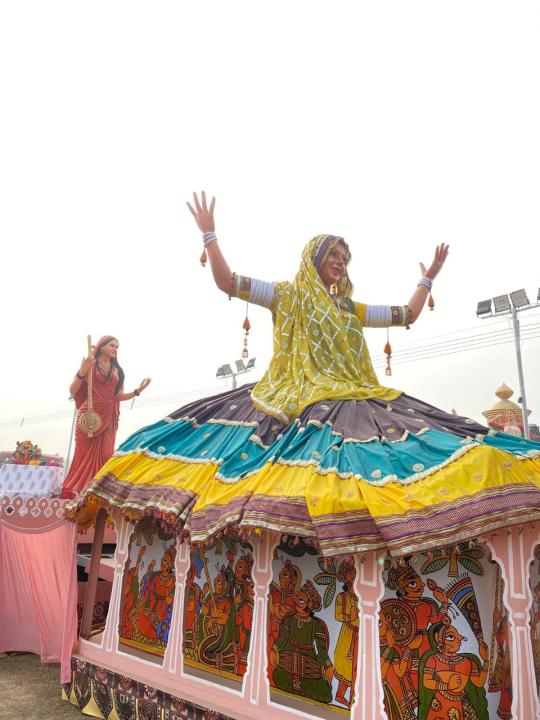
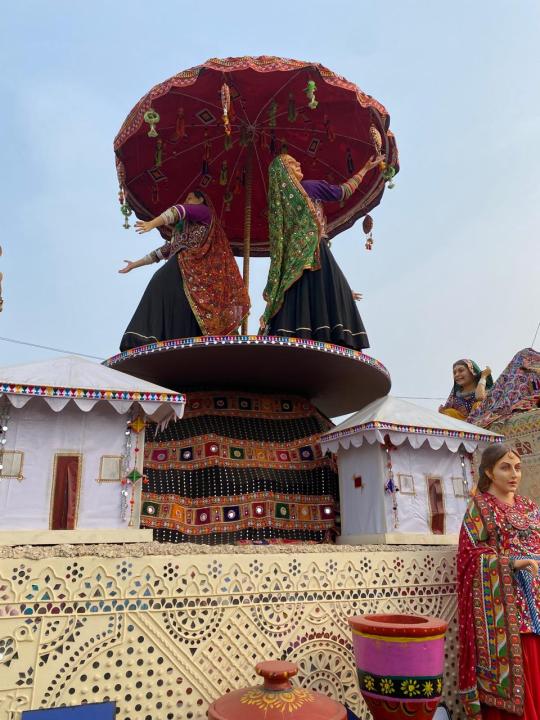
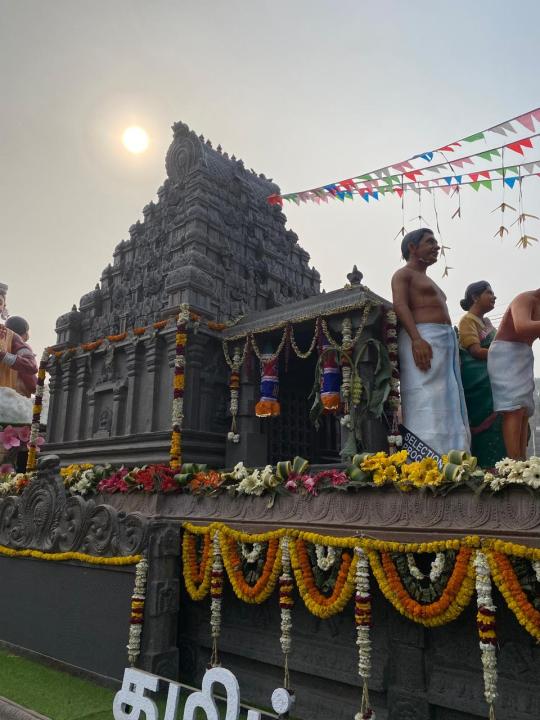


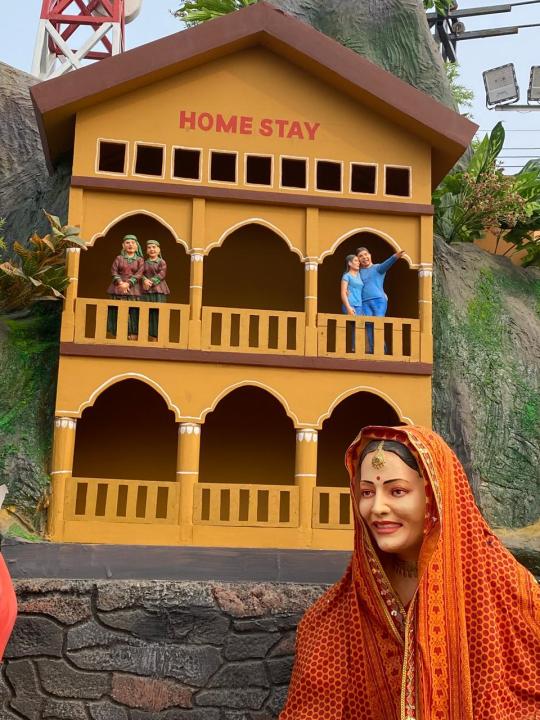
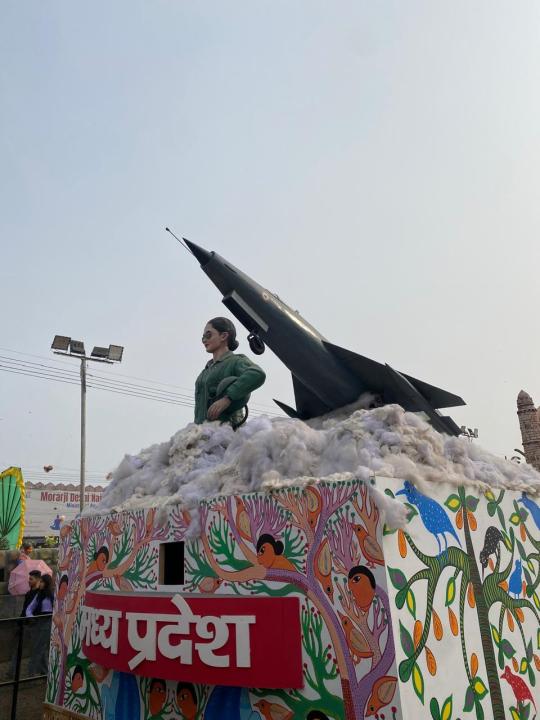

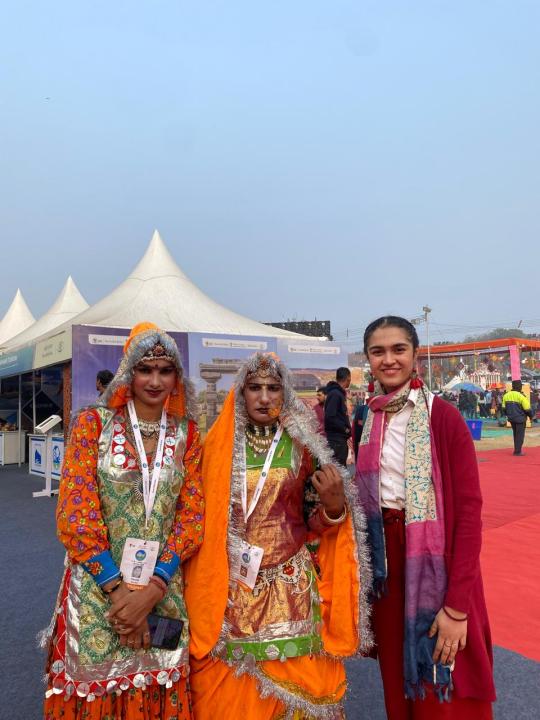

Bharat Parv 2024
Bharat Parv is an annual event organized by the Government of India to celebrate the country's rich cultural heritage, diversity, and history. The event typically takes place in New Delhi around Republic Day, which falls on January 26th. It aims to showcase various aspects of India's culture, including its cuisine, handicrafts, music, dance, and traditions.
During Bharat Parv, visitors can explore different pavilions representing various states and union territories of India. These pavilions usually feature exhibitions highlighting the unique cultural, historical, and artistic aspects of each region. Visitors can enjoy traditional performances, sample regional cuisines, and purchase handicrafts and souvenirs representing different parts of the country.
The event also includes cultural performances, folk dances, music concerts, and exhibitions showcasing India's achievements in various fields such as science, technology, and sports. Additionally, there are often competitions, workshops, and interactive sessions aimed at promoting awareness and appreciation of India's diverse heritage among visitors, especially the younger generation.
Overall, Bharat Parv serves as a platform for fostering national unity, promoting tourism, and celebrating the rich tapestry of India's culture and heritage. It attracts both domestic and international visitors and provides an opportunity for people from different backgrounds to come together and experience the vibrancy and diversity of India.
4 notes
·
View notes
Note
hii can i please request a 🎃for spn? Thanks!!
So im 5 foot (and a half inch 😭), dark brown eyes and hair (2c wavy its not long but its not medium either) big eyes, babyface so im percieved as cute, i'm a bit tan, skinny, strawberry legs, ear piercings (2 imma get another one soon hehehe) and uhh yeah thats it for physical
Now personality, bubbly, caring,kind,sweet, ambivert, sensitive, hate conflicts, very lovergirl vibe, sunshine in human form with a little bit of chaos sprinkled in there as concluded by my friends, softspoken, think before speaking (overthinking tbh), i love dancing (ive learned kathak a little and can do other dance forms easily too like contemp., freestyle, bollywood, salsa and folk dances from india), reading books, sketching, photography, watching bollywood movies, dressing up (especially in traditional wear) id describe my aesthetic as very cottagecore + coquette+ softcore+ desi glam like cutesy clothes (but sometimes i do be feeling like a baddie)
My fave artists are lana del rey, abba, phoebe bridgers, hozier, green day, boygenius, sufjan stevens, mazzy star, marina, red hot chili peppers, sharon van etten, cigs after sex, arctic monkeys, the cranberries. And some hindi music artists.
Im fluent in 2 languages and can understand and speak broken urdu, sanskrit and punjabi
My fave seasons are fall, summer and spring, im an aquarius and bisexual, eldest daughter, desi (indian) im a chai person, hate coffee and street food is my absolute reason for living, im really into fashion and wanna be a fashion stylist
Ok idk what else to say 😭
YOURE SO COOL!
hope you enjoy this mashup darling!!!

I ship you with Sam Winchester!
PLEASEEE he will beg you to speak in your languages and maybe even teach him some! he will religiously listen to Cigs after sex, red hot chilli peppers and Arctic monkeys with you. please annoy dean together he will have the time of his life.
he would love to meet your family and younger siblings. he treats them as his own family and loves it so much!!
8 notes
·
View notes